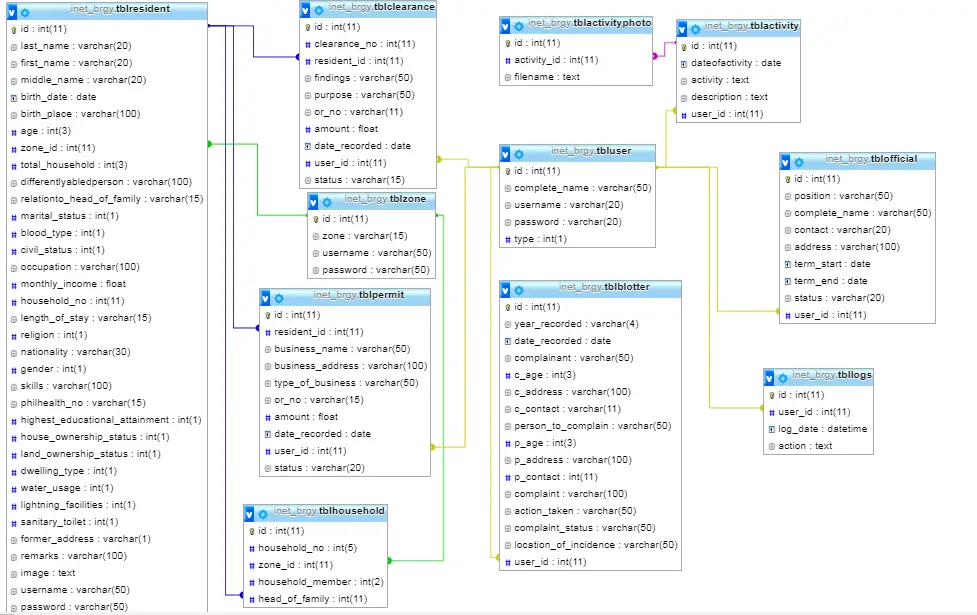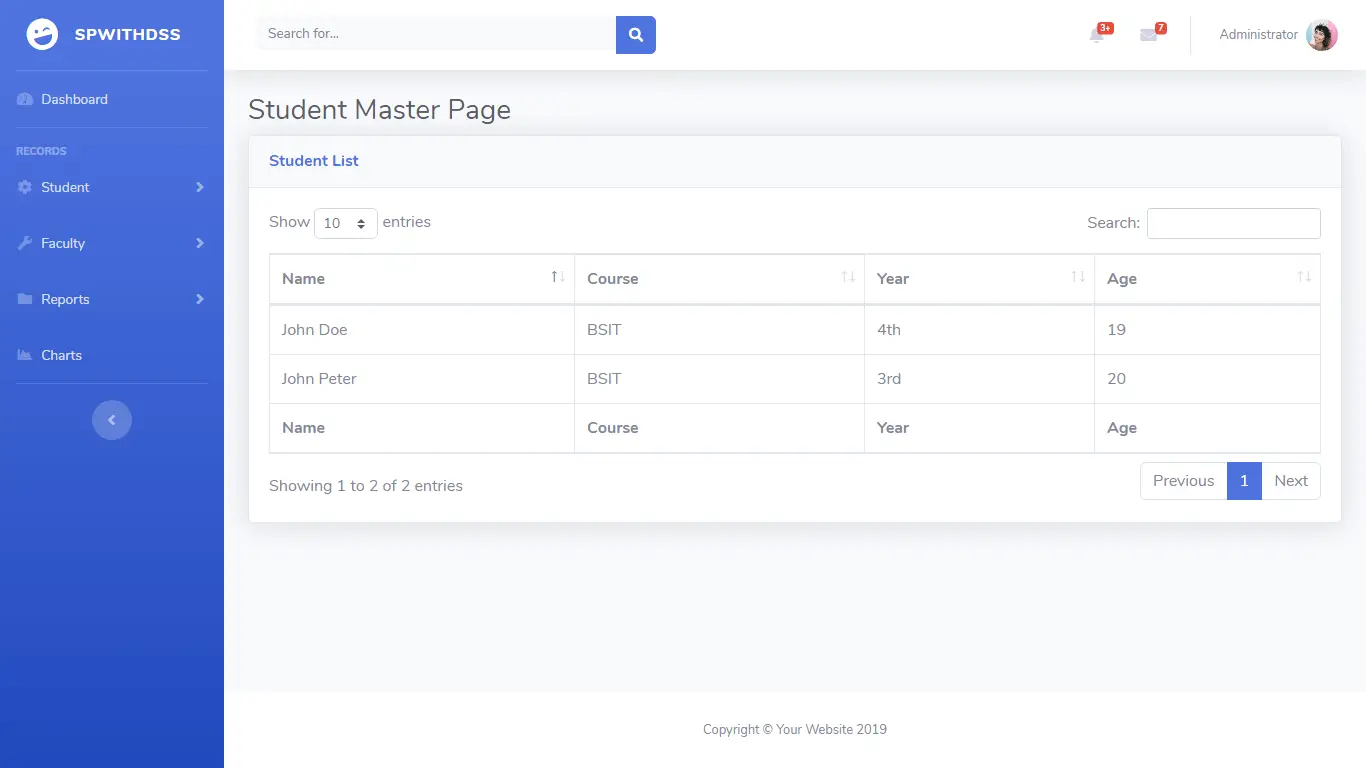Class Scheduling System Review of Related Literature
REVIEW OF RELATED LITERATURE AND STUDIES
This article suggests some significant literature and studies conducted which are important in the development of Class Scheduling System.
FOREIGN RELATED CONCEPTUAL LITERATURE
A literature is an article written by an authority. Related literature usually explains the concept being investigated, perhaps elucidate on the variables or factors that relate to this concept.

On Web-based expert system for class schedule planning using JESS
Making a class schedule for the next semester that suits a student’s interests and meets overall graduation requirements within a time frame is not always easy. The changing requirements, transferable units of different schools, the availability of classes and other factors can often cause mistakes in the scheduling process. An automated tool can help students to identify scheduling mistakes and compare available options. This paper introduces a web-based expert system, called class schedule planner (CSP). CSP encapsulates class-scheduling knowledge and gives intelligent scheduling advises to students. CSP has a set of Web forms to collect inputs from the users and then translates the request into facts. It uses JESS (Java Expert System Shell) as a tool to process the facts and rules to generate feasible schedules for the students. Integration of data from various sources into JESS facts and rules is done by CSP controller and XML translator. The translated result from JESS is integrated with the Web presentation using JSP (Java Server Page). The unique technical contribution of this work is that unlike most other
expert systems that require static expert knowledge this expert system allows dynamic management of knowledge in real time using Web interface (http://ieeexplore.ieee.org).
We introduce constraint-based scheduling and discuss its main principles. An approximation algorithm based on tree search is developed for the job shop scheduling problem using ILOG SCHEDULER. A new way of calculating lower bounds on the makespan of the job shop scheduling problem is presented and we show how such results can be used within a constraint-based approach. An empirical performance analysis shows that the algorithm we developed performs well. Finally, taking the job shop scheduling problem as a start point, we discuss how constraint-based scheduling can be used to solve more general scheduling problems (http://www.springerlink.com).
On Class Schedule Problem: I-O-C Problem
The problem relates to the design of a class schedule for a college and includes assignment of instructors, subjects, and classrooms to slots of a weekly timetable. In order to simplify the problem, we will consider the class schedule for one grade of a specific department. It is clear that the class schedule problem belongs to the implicit solving activity problem class. The output, a class schedule, is not a sequence of solving actions. Furthermore, it is also clear that the problem does not have an explicit evaluation function of an output. It is, however, not clear whether the problem has an explicit target state. We assume that an output of the current solver is a tentative schedule that avoids conflict as much as logically possible. The schedule produced may not be the final one. The final schedule can be determined only after negotiation over intrinsic conflicts, and this phase is assumed to be out of the scope of the current system. As such, the final state is a situation in which no further logical assignment is possible under the given constraint. The class schedule problem is handled as a closed-target problem in this sense. The stdPDsolverwill be used for the present system as the goal-seeker (http://www.springerlink.com).
LOCAL RELATED LITERATURE
Related studies in contrast to related literature are works based on empirical data.
On Computer Aided Curriculum Planning and Scheduling
This paper proposes the construction of a Computer Aided Curriculum Planning and Scheduling system (CACPS) for both higher education administrators and students. Given the degree requirements, multi-year course offering schedule and the transcripts of a student, CACPS can automatically generate his/her personalized multi-year study plan, which can be further refined by the student via web portals. The multi-year study plan of each student, in turn, is taken advantage by CACPS to predict enrollment of each course. This allows CACPS to promote the utilization of educational resources by optimizing multi-year course offering schedules (http://vlab.gsw.edu).
On automated class scheduler for SLU
This study is all about solving the problem of class time tabling in local setting. The study is founded on the premise that time tabling is such an arduous task, which would actually be eased by computer automation. In so doing, genetic algorithm was chosen from other approaches because it offers more advantages compared to the other two candidate approaches, namely simulated annealing and tabu search. In order to prove the effectiveness of the GA approach to the local time tabling problem, a rapid prototype was developed.
The study presented the prototype based on a genetic algorithm approach. Based on several data comparisons, it was shown that the prototype was able to improve the fitness of its initially generated population while maintaining the feasibility of the schedules. It was also shown that the generation of class schedules takes lesser effort and lesser time to accomplish as compared with the manual scheduling (http://dspace.slu.edu.ph).
FOREIGN RELATED STUDIES
Foreign studies may have some biases in terms of the cultural background of the respondents of the study.
On Class Room Management
The class meeting is one of the most powerful tools a teacher has to ensure that a positive learning environment is created and maintained throughout the academic year.
In many companies, there is a “core time” where all employees must be present each workday. By allowing employees to stagger hours or by changing from five eight-hour days to four ten-hour days (a “compressed work week” ), traffic and commuting problems are eased, parents can adjust work schedules to school schedules, and expensive office equipment, such as computers, can be used more efficiently. In 1997 about 25 million full-time workers (about 15.1% of the U.S. workforce) had flexible schedules. One variation on flextime is job sharing, in which two employees share the duties of one job by splitting the weekly work hours associated with the job. Some flextime programs permit employees to work some hours at home; this can include telecommuting , that is, using the telephone and a home personal computer equipped with a modem to conduct (http://www.encyclopedia.com).
Assigning an Instructor
Assigning an instructor to a course section requires attention to several fields that may be overlooked. These fields include Grade Access, EmplRcd#/Job code, Primary Academic Org, and Workload. This user guide includes information on instructor assignments. In-depth details regarding the Schedule of Classes menus and functionality are available in the CSUSB Course Schedule Build and Maintenance User’s Guide. In depth details regarding instructor workload and the APDB Faculty Term File are available in the User Guide Instructor Term Workload and Faculty Term File (http://cms.csusb.edu.).
On Course Meeting Times
Table of Contents
Each school and department must distribute course offerings over all five days of the week and over the full class day. Classes must be scheduled proportionally over four of the five time zones described below. While the fifth time zone is optional, it is still part of the teaching day and should be utilized when possible. Classes using department-controlled classrooms are also required to adhere to time zone scheduling.
Block classes that meet for longer than two hours per session must be scheduled in Zones 3, 4, or 5, or on Fridays. Block classes may not be scheduled during Zones 1 or 2. Departments are permitted to schedule 600-level graduate seminars as block courses across time zones, including Time Zone 2, in their own department-controlled classroom.
On Room Assignment Policies
Credit-bearing classes will take precedence over all non-class related seminars or events. Non-credit events, study groups, breakout sessions, etc. will be scheduled after all credit classes have been assigned a room.
When scheduling classrooms, every effort will be made by Academic Scheduling to provide the accommodations requested with the space utilization requirements of the whole university as the objective.
Assignment of classrooms for sections with enrollment greater than 70 students is an independent scheduling procedure. Requests are submitted on the Large Classroom Request form and conflicts are resolved on an individual basis with academic departments. The academic scheduling coordinator is then responsible for the update of the room assignment when completing schedule data entry.
Initial scheduling priority will be given to those classes requiring specific equipment or seating configurations. Each quarter the Office of the Registrar will make available to departments a report of classes offered the previous year. The department scheduling coordinator will update course offerings in Banner. Building preference may be noted and specific attributes for classes which require special features, i.e. computers, video, seating, maps etc. must be noted by the department at the time the course is entered in Banner, prior to classroom assignment.
Sections designated as tentative (‘Q’) will be assigned rooms after all other sections have been assigned. Tentative sections may not be scheduled in Zone 2.
Laboratories and departmental or joint-controlled classrooms should be assigned and submitted at the time schedule information is entered.
Enrollment history or anticipated increases for a particular course will be used by Academic Scheduling to determine classroom size, so enrollment limits should be carefully reviewed and adjusted. Departments should base estimated enrollments on the actual enrollment during the previous corresponding term, with an estimated increase no more than 15%. In cases where the department projects a greater than 15% increase, justification must be provided in writing.
On Resolution of Conflicts
Class size and equipment requirements will be the determining factors in disputes involving credit-granting academic classes.
Highest priority is given to departments which do not control their own seminar rooms. Departments with dedicated seminar rooms are required to maximize the use of these rooms for smaller classes and meetings, rather than requesting room assignments from the general pool.
Academic Scheduling will make every attempt to mediate room conflicts and develop a solution. However, in the event that conflicts cannot be resolved at this level, the Deans, Registrar and/or the Provost’s Office may become involved.
Faculty and instructors are responsible for sharing the ten-minute ‘pass time’ between classes. Every effort should be made to vacate the classroom in a timely way, allowing the following instructor to set-up and prepare, as well as allow the finishing instructor to make final remarks and gather materials. There is no ‘ownership’ of this time. Students should be encouraged to meet with the instructor during office hours rather than during the ‘pass time.’ Should conflicts develop, instructors should first attempt to resolve the concerns between themselves. If the result is unsatisfactory, conflicts must be mediated by department chairs.
On Joint-Controlled Classrooms
A joint-controlled is one which is jointly scheduled by an academic department and the Academic Scheduling Office. The academic department has priority in assigning courses into classrooms under joint-control, at the time the term class schedule is established.
The department is expected to fully use the seating capacity of department-controlled classrooms and conference rooms, and adhere to the time zones established within these procedures.
All unscheduled time after the initial schedule is developed will be available for general assignment. Once rooms are assigned, classes will not be removed from joint-controlled classrooms when there is a change in the controlling-department class offerings. Joint-controlled classrooms will not be made available for general use or student events. In turn, academic departments must schedule any use of the room beyond classes with Academic Scheduling, who will determine availability.
On Classroom Accessibility
Classroom assignments may be changed when the room is determined to be accessible for a student or an instructor. Instructors should notify Academic Scheduling as soon as they identify any barriers to their own or a student’s access to or within a classroom. Academic Scheduling will make every effort to relocate the class to an accessible room. Academic Scheduling works closely with Disability Services to ensure that classrooms and classroom locations are fully accessible for disabled students and instructors.
On Changes in Classroom Assignments
Instructors/departments may not move their class from an assigned room without prior approval from the department scheduling coordinator and the Office of the Registrar. All schedule changes affecting class meeting time/days or classroom assignments must be requested in writing to Academic Scheduling. Before submitting the request, instructors should inform students about the possible change and encourage any student whose access to the class might be impacted by a change to notify them as soon as possible. In the event of an emergency evacuation of a classroom or building, Academic Scheduling will attempt to relocate classes to temporary meeting rooms if desired.
On Room Size and Configuration
Seating capacity has been determined in accordance with state and city safety regulations. Departments are not to over-enroll students beyond the maximum classroom size. If it appears that student demand will surpass the scheduled room, departments should contact Academic Scheduling immediately, before the class grows too large, to determine if alternate space is available. It is unacceptable for students not to have appropriate seating. Inappropriate seating violates building codes and provides a poor image of the university and its ability to manage enrollment.
Furniture and equipment such as overheads, chairs, and tables are not to be moved from one room to another without approval of the Academic Scheduling or Media Services. If a room does not contain adequate facilities to meet the scheduled maximum enrollment or equipment needs, the instructor should contact the department scheduling coordinator for assistance. Academic Scheduling will attempt to locate alternative space, if necessary (http://registrar.uoregon.edu).
LOCAL RELATED STUDIES
Local studies may have some biases in terms of the cultural background of the respondents of the study.
On Class Scheduling and Classroom Assignment Policy
Authority for Assignment of Space:
Classrooms are assigned by the Office of the Registrar, unless authority is delegated. Academic units with classroom and conference/meeting space will have first priority for that space, providing that the requested classrooms are indicated on the Schedule of Courses form submitted to the Registrar by the required due date. These units must assign seminars and classes with small enrollments to academic conference/meeting spaces whenever possible.
The Office of the Registrar will publish a Production Schedule with the annual scheduling deadlines and dates. Departments that submit both scheduling and classroom information on-time, accurately and within the scheduling grid will receive a higher priority for scheduling times and classroom preferences and cannot be “bumped.” Those departments submitting late or incomplete requests or changes or during non-standard times will receive the lowest priority in both scheduling and classroom assignment.
Major departmental change requests (those involving the addition of new courses, changes in time or day, or fluctuation in enrollment figures) submitted after the published deadline will be processed after all other scheduling actions. All such changes must be approved by the dean or director. Requests for changes in classrooms will be made by administrative assistants in schools or departments and submitted to the Scheduling Coordinator in the Office of the Registrar (http://riziki0.tripod.com).
On School Scheduling Software Solutions for Education
One of the many things that all schools and universities have in common is a need to schedule – people scheduling, class scheduling, events scheduling, etc. However, inefficient scheduling can lead to class and study room double bookings, inefficient use of rooms and resources, and more. That’s why thousands of schools and universities have chosen PeopleCube’s Resource Scheduler school scheduling software to help maximize resource utilization, reduce real estate and operational costs, and even lower energy consumption.
On Improve Student Collaboration
When students need to reserve a study room, PeopleCube’s Study Room Reservation System is the perfect fit. Depending on your organization’s preferences, students can reserve study rooms via any web browser, from their Outlook calendar, a lobby kiosk, or using PolyVision’sRoomWizard. Any or all of these user interfaces are supported by the Study Room Reservation System. Either way, you’ll find that the Study Room Reservation System will help you:
- Eliminate study room double bookings
- Simplify study room scheduling using the RoomWizard on-site display units
- Improve collaboration with simplified room booking processes
On Block Scheduling
This is intended to result in more time for teaching due to less class switching and preparation. It also allows for a student to take four electives, rather than two, or three.
In some cases, such as in medical school or other intensive university program, a block schedule means taking one class at a time, all day, every day, until all of the material is covered. A normal university course might then be completed in three or four weeks of focused effort on a single topic. When used as a supplement to a normal academic term, instead of the normal schedule, this approach is sometimes called a mini-mester.
Conversion to block scheduling became a widespread trend in American middle schools and high schools in the 1990s. Prior to that, many schools scheduled classes such that a student saw every one of their teachers each day. Classes were approximately 50 minutes long, but under block scheduling, they became approximately 90 minutes long.
However, many American high schools still use the traditional eight- or nine-period day, and consider block scheduling to be one of many ill-considered education reform schemes.
Part of the motivation for block scheduling is to prepare students for taking end-of-grade/end-of-course standardized tests used to measure student achievement (and in some school districts, teacher pay and school funding). Another is social–to foster cooperation among students. This is done by having students work in groups (called “cooperative learning“) to help them learn from each other, rather than have classes that focus on teacher-delivered content, as some experts believe that students learn better from peers than from professionals (http://en.wikipedia.org).
Credits to the authors and developers of the study and project.
You may visit our Facebook page for more information, inquiries, and comments. Please subscribe also to our YouTube Channel to receive free capstone projects resources and computer programming tutorials.
Hire our team to do the project.


